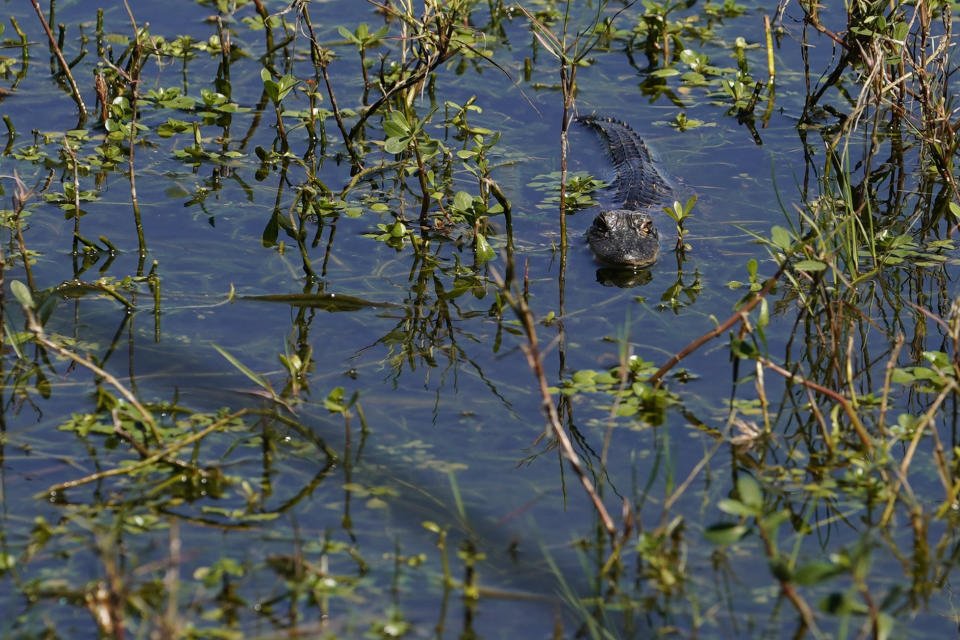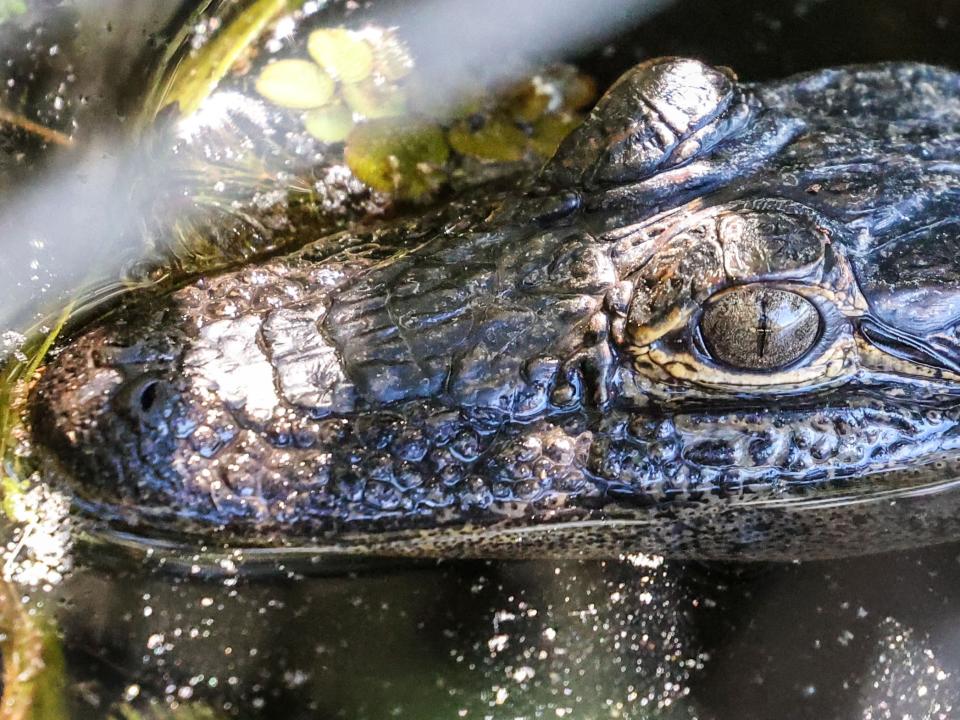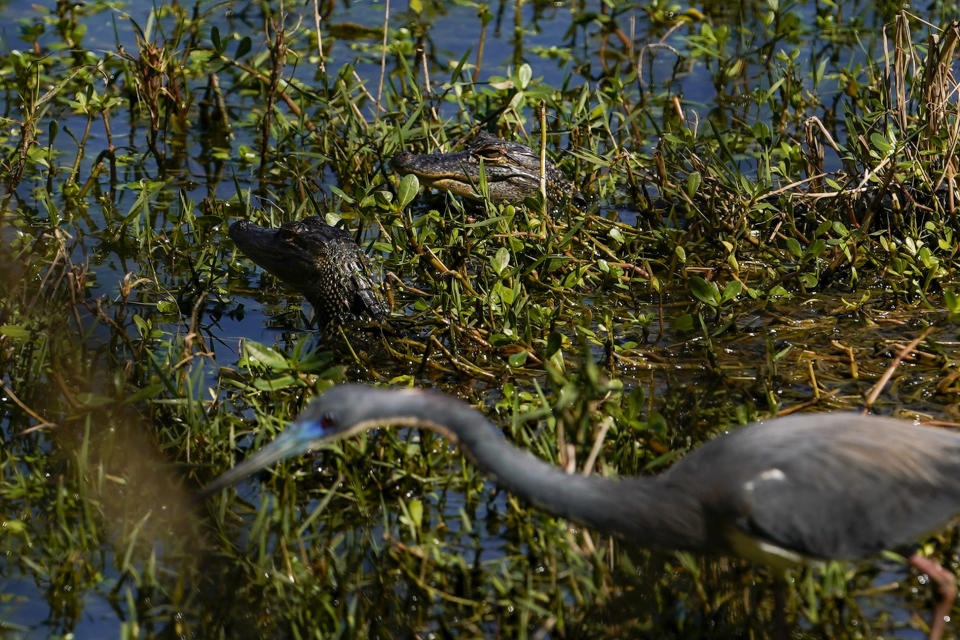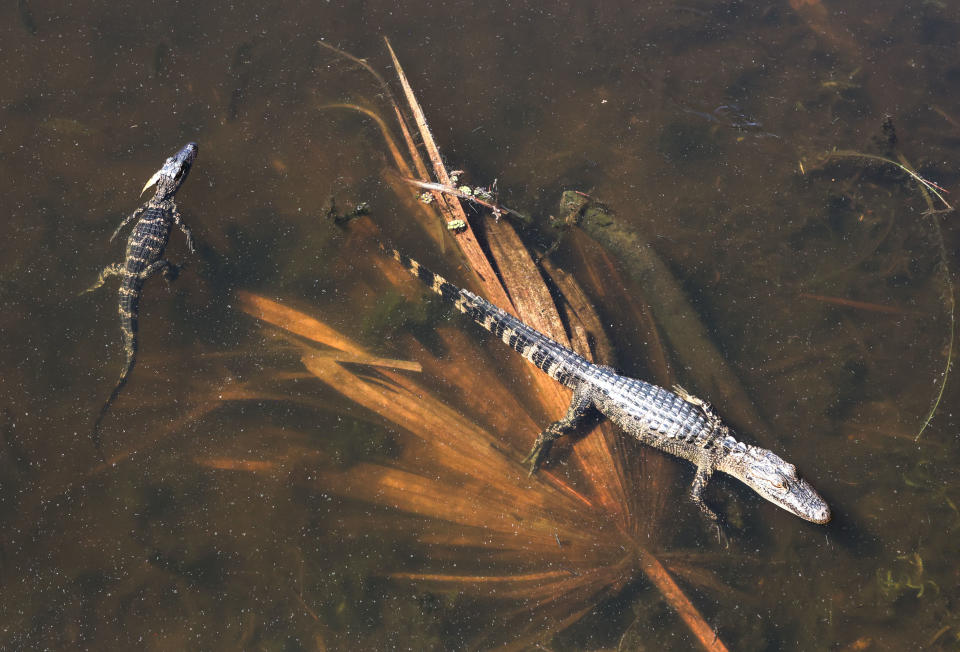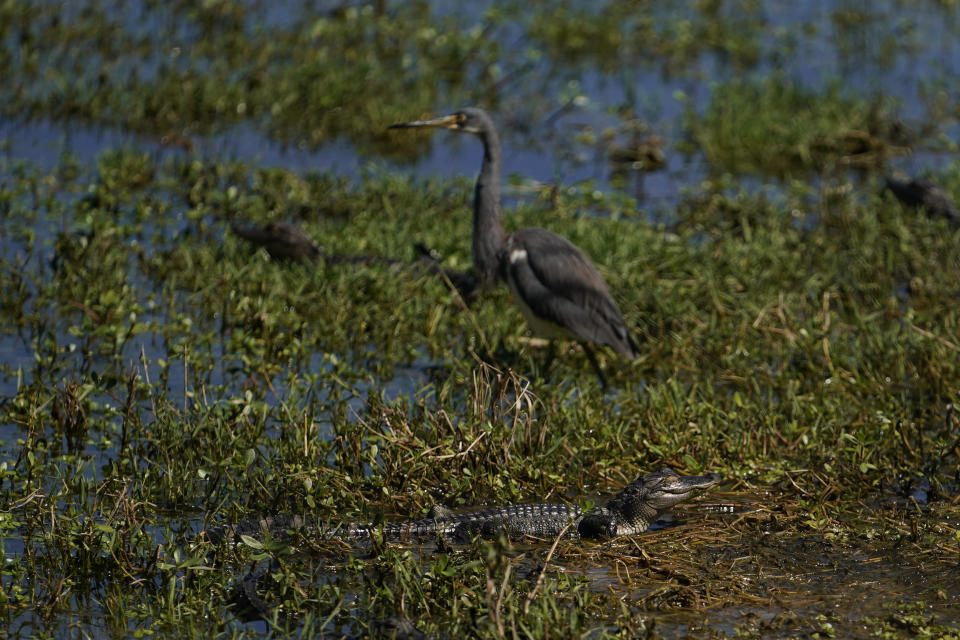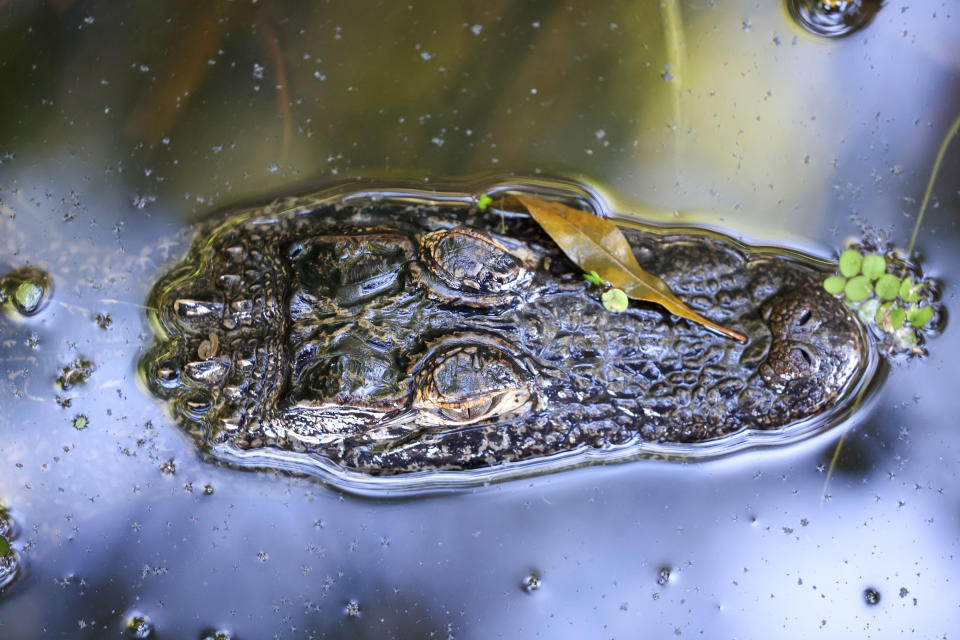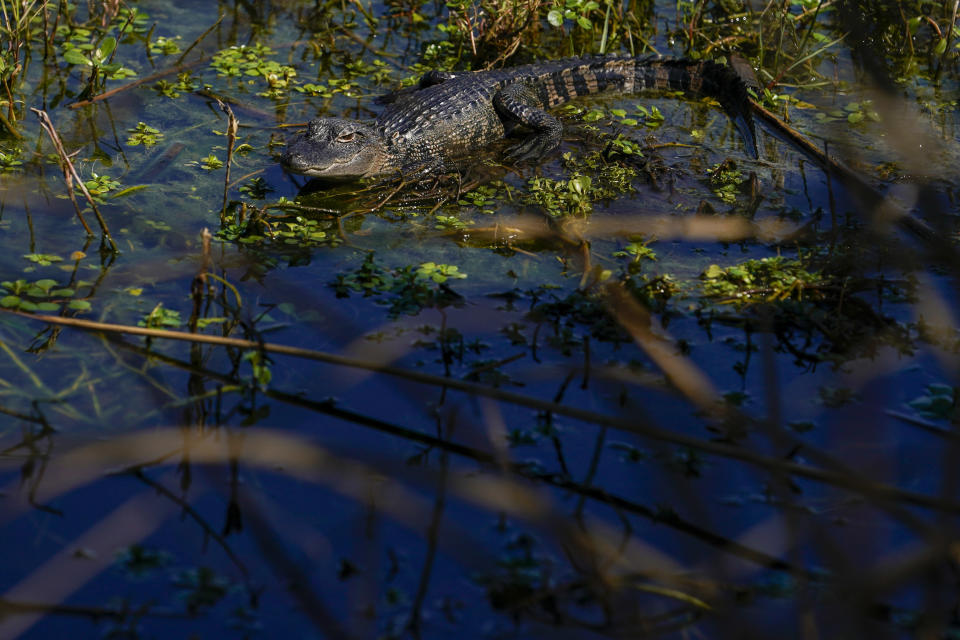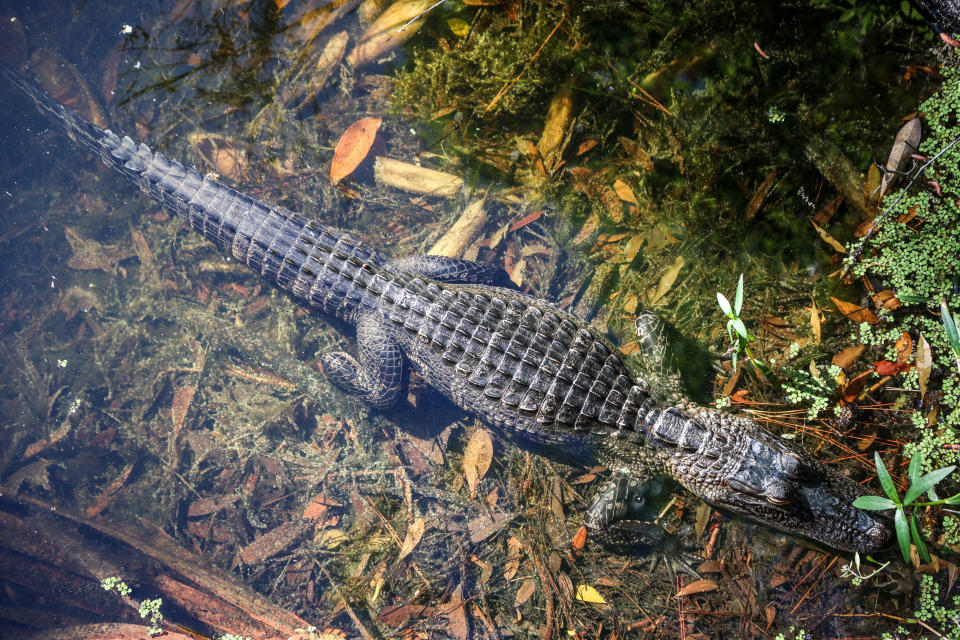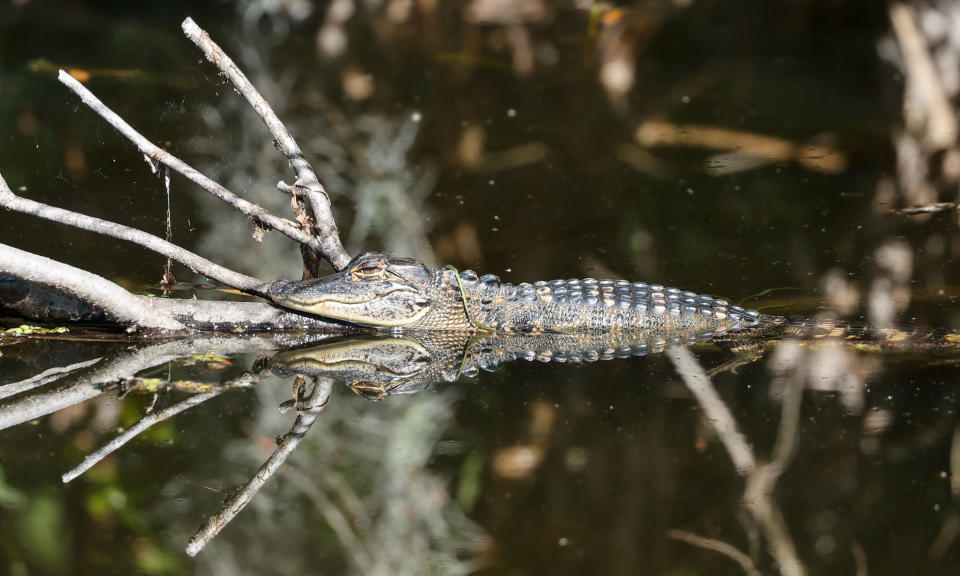It’s little gator season in Tampa Bay. See them while it lasts!
It’s a rite of passage in Florida.
You’re out at the park with your friends, ooh-ing and aah-ing over a brood of ducklings when an egret swoops in and snatches one like a Dorito.
Chomp, Chomp! It’s gone. You shriek.
Now — nature lovers be warned — it’s the little alligators’ turn.
At preserves and swampy parks around Tampa Bay, dozens of juvenile crocodilians, likely born last summer, are attracting the attention of binocular-clad spectators.
At Boyd Hill in St. Petersburg, they lie in shallow waters surrounding an island boardwalk, swimming, slithering, lurking in high grass. Up north, at John Chestnut Sr. Park, they surface near the shore of Lake Tarpon.
Averaging just a foot and a half in length, the young gators are charming — like a small dog you’d scoop up and give a little nose boop!
But, according to the Florida Fish and Wildlife Conservation Commission, they’re also vulnerable. Out of an average nest size of 38 eggs, just 5 hatchlings are likely to reach adulthood.
A major predator? Bigger gators.
“Small alligators are eaten by a variety of predators including raccoons, otters, wading birds, and fish; however, larger alligators may be their most significant predator,” the FWC website states. “As a population matures (and has a higher percentage of large alligators), the survival rate would be expected to be lower, in part due to a higher rate of cannibalism.”
It’s a gator-eat-gator world. Take a look at the little ones (while supplies last)!
